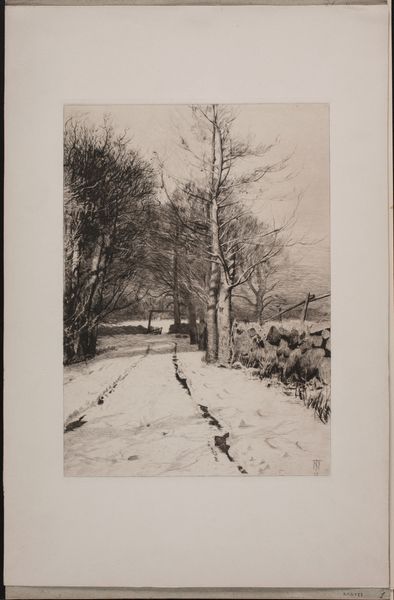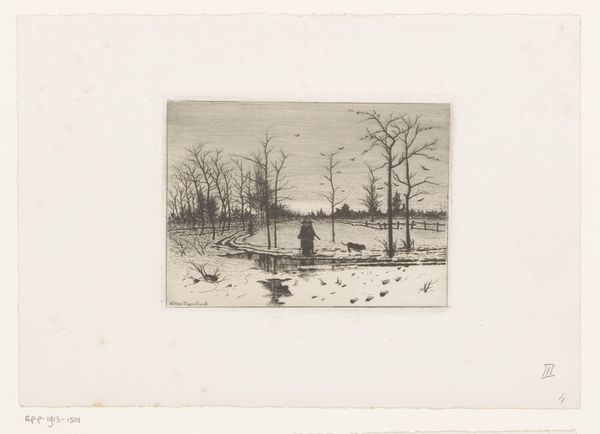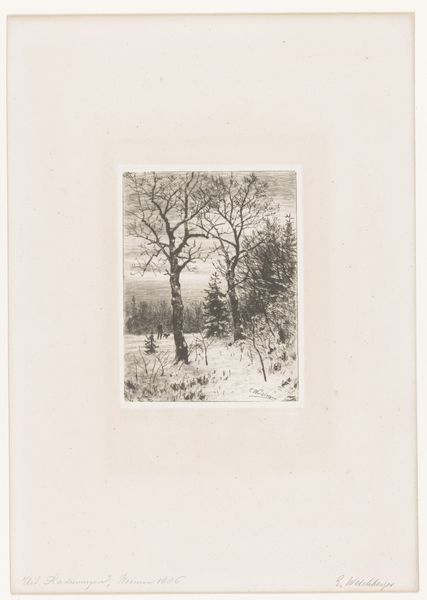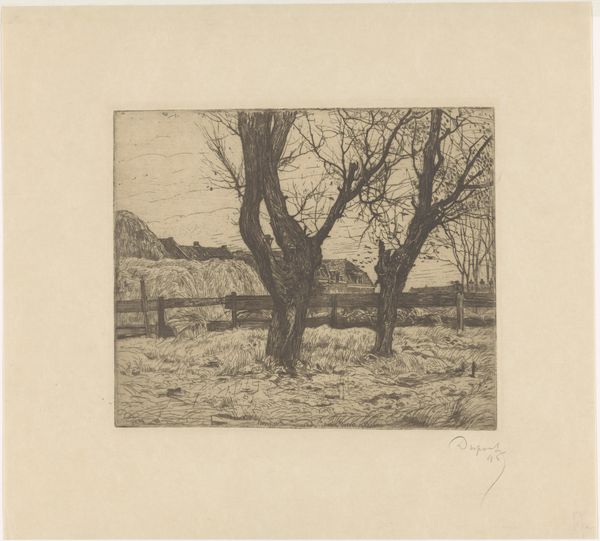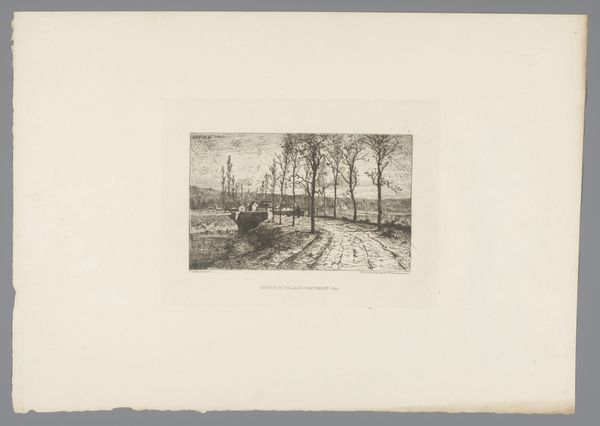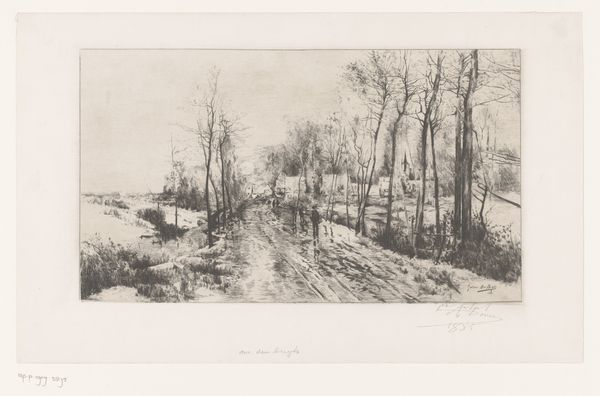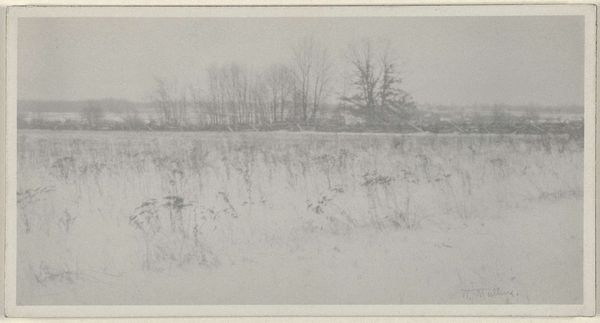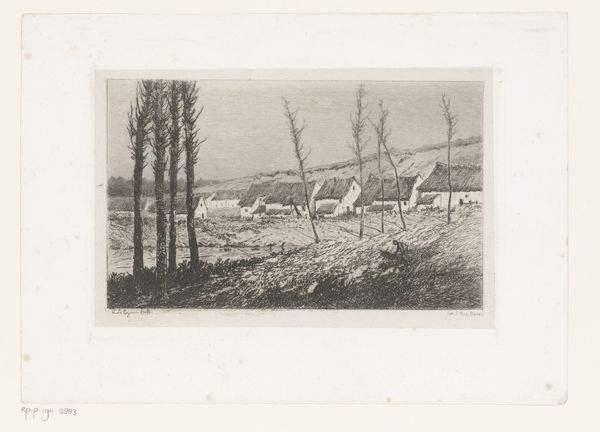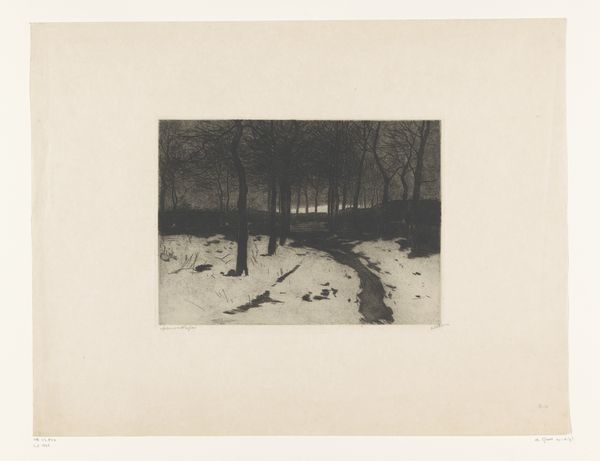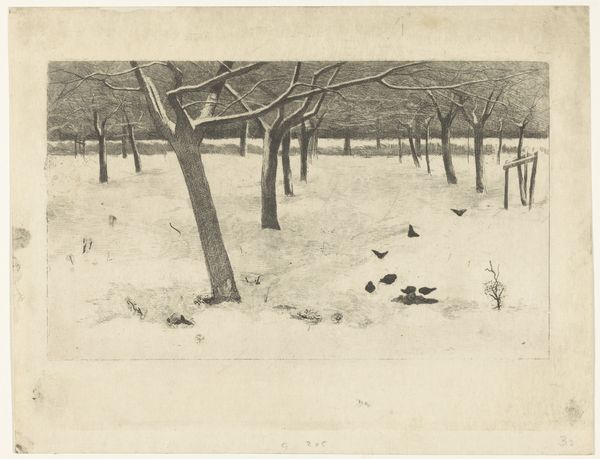
graphic-art, print, etching
#
graphic-art
# print
#
etching
#
landscape
#
northern-renaissance
#
realism
Dimensions: 120 mm (height) x 175 mm (width) (billedmaal)
Editor: Here we have "Bøllemosen," an etching by John Lübschitz from 1889. There's something about the starkness of the trees against that pale, possibly frozen, water that gives me a somber feeling. What do you see in this piece? Curator: I see a potent commentary on the fraught relationship between humanity and nature, particularly during a period of intense industrial and social upheaval. The bleakness isn't merely aesthetic. How might the artist be responding to, or even critiquing, the prevailing social conditions through this seemingly simple landscape? Editor: That's an interesting angle. I was just thinking about the scenery, but connecting it to society… So, you’re saying it’s not just a picture of a bog? Curator: Exactly. Consider the title. A "mose," or bog, often evokes ideas of the rural, the marginal, perhaps even resistance to urbanized spaces. This work participates in a discourse about land and ownership and who gets to determine its fate. Does the barrenness of the landscape invite interpretations beyond the purely visual? Editor: It does make me think about the environment, actually. Was there some sort of conservation movement happening back then that this might relate to? Curator: Precisely! As cities expanded, the preservation of nature became increasingly urgent, linked to anxieties about modernity itself. Remember, landscapes are rarely just landscapes. They often mirror our social anxieties and aspirations, particularly class conflict related to land. What new perspectives do you take from this etching, thinking about it through that activist, environmentally-aware lens? Editor: I see the desolation in a new light, almost as a warning. It’s like the artist is saying something about the consequences of neglecting our natural world. Curator: And by examining such an understated work through an intersectional lens, considering class, environment, and history, we unlock its complex social meanings.
Comments
No comments
Be the first to comment and join the conversation on the ultimate creative platform.

